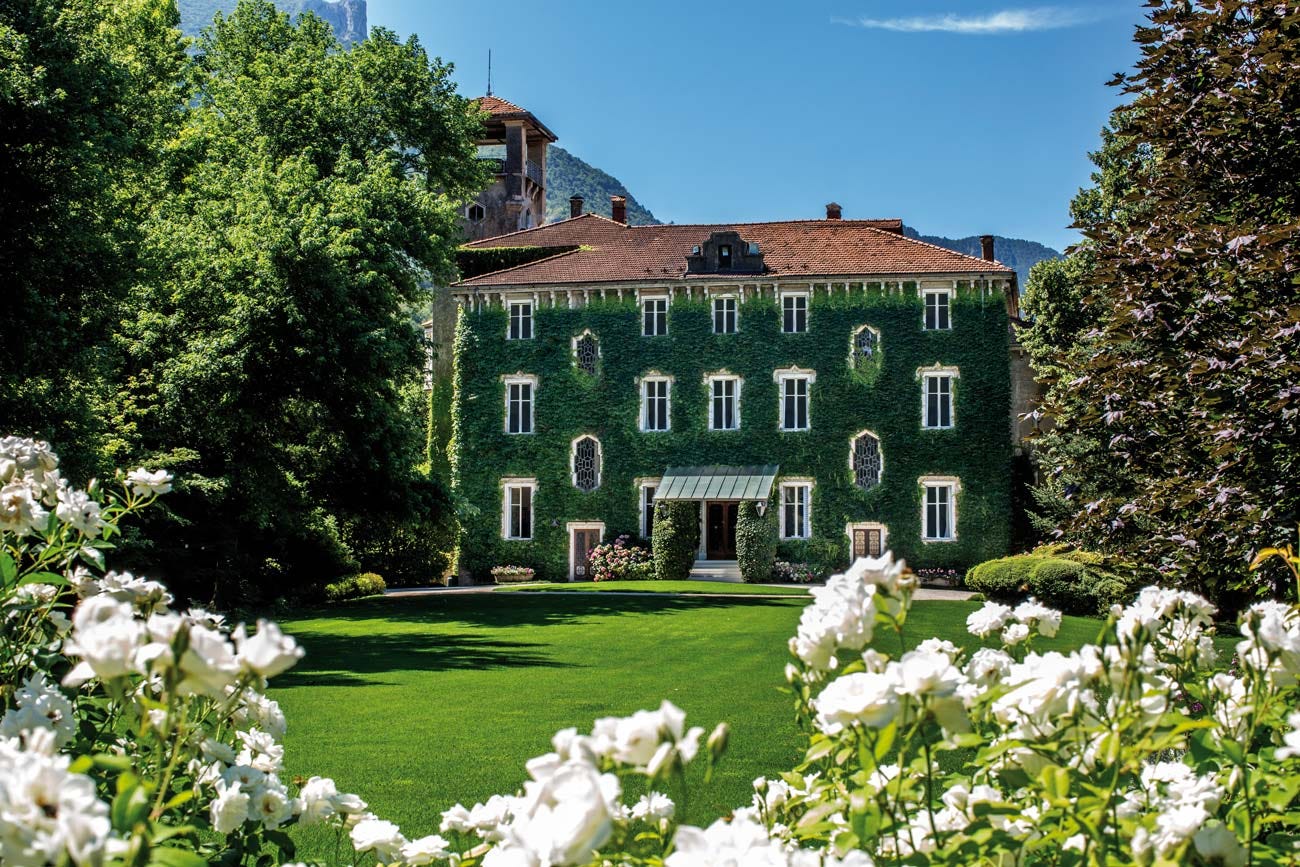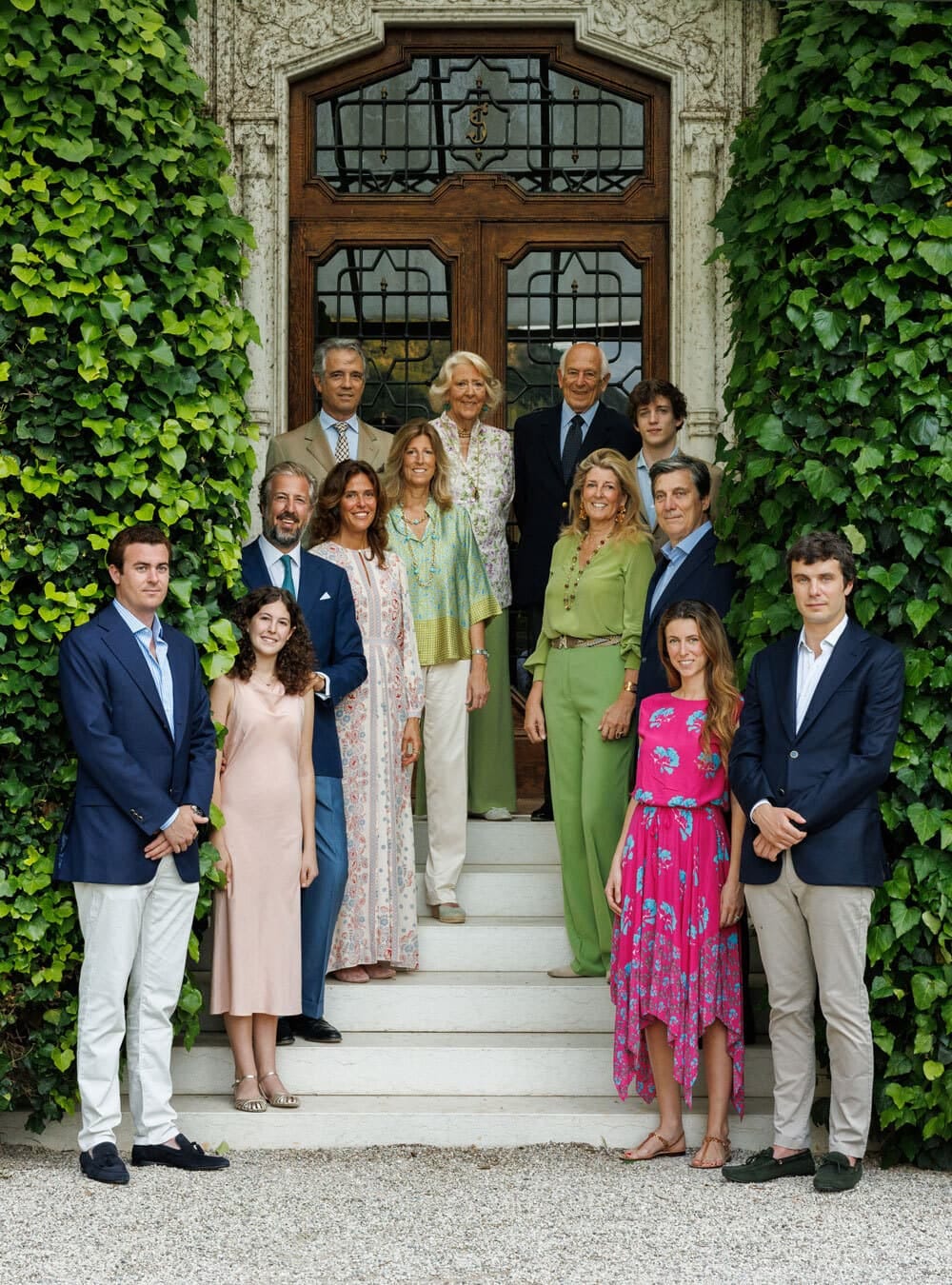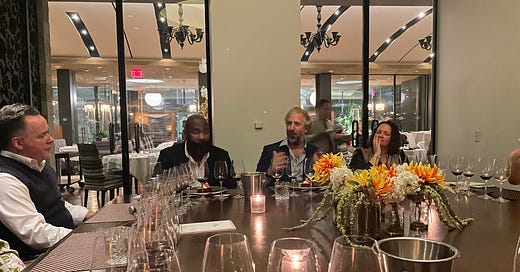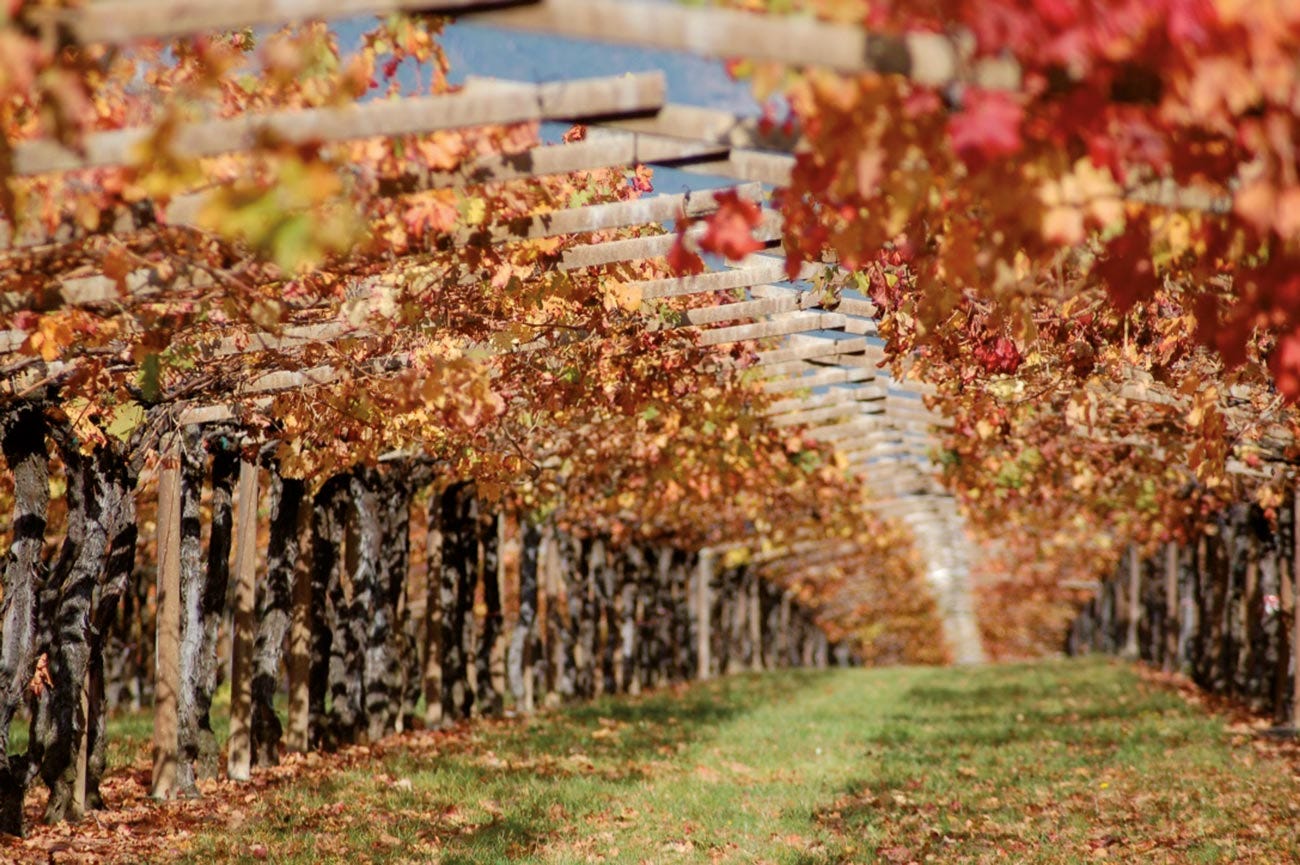I think everyone who attended the dinner would agree: It was a great success for corrupt wine writing. I got a free three-course meal at Drago Centro with five amazing glasses of wine from the 300-year-old Italian winery San Leonardo. More impressively, I got two of those glasses slightly refilled. (I needed more time to distinguish the 2019 from the 2017.)1
While eating short ribs, I listened carefully to winery owner Marchese Anselmo Guerrieri Gonzaga, thinking deeply about which of those words are his name and which are his title.
While the Marchese or maybe the Anselmo explained that wine tastes different when the grapes are grown on pergolas instead of trellises, the real wine writers asked about the vineyard’s elevation and day-to-night temperature differential. I asked dumb questions. This was because I ignored the spit bucket. Also I don’t know much about wine.
What I wanted to know was why this gorgeous Italian winery

which charges more than $100 for its signature red blend

uses FRENCH GRAPES instead of indigenous Italian ones. The subtext of my question was: Why would I buy a blend of Bordeaux grapes from Italy? Wouldn’t I be better off buying them from, say, Bordeaux? If I’m going to spend $100 on a bottle of Italian wine, wouldn’t I want a Barolo or an Amarone or something else I can say with a thick accent?
The Marchese/Anselmo had heard this question before. He repressed a sigh and explained that his region had long produced indigenous grapes that suck. The monastery that once owned the property made wines that served two main purposes:
you could drink it without getting sick, unlike the local water
it provided calories to the workers in a region where food was scarce
These were not descriptors you would put on the back of a label.
After getting a degree in wine, the Marchese/Anselmo’s father decided to plant cabernet sauvignon in the 1970s. It was a hearty grape that produced a greater quantity and quality of wine.
San Leonardo isn’t in a region with lots of great wineries. They’re the only serious guys around their area of Trentino. And they plant Bordeaux grapes.
But the wines are not Bordeaux. Because of the soil, cold weather, wild yeast, and minimal use of oak, the wines are more acidic. Lean. Austere. One wine expert next to me said it was “high toned” and I said, “Yes, very high toned indeed.” When she didn’t believe that I knew what she meant, she spoke of a “balsamic vinegar taste.” Which sounded like a lot of words for “acidic.”
It was delicious. And I felt dumb for having instituted some random rule for authenticity. Is a ragu bolognese not Italian because tomatoes weren’t brought to Italy from the Americas until the 17th Century? Should we eat Korean tacos? Do I not like cabernet sauvignons from California? Did I really think the Marchese/Anselmo and his family were not sufficiently Italian? After seeing this photo?

I liked the wines very much with the Italian food I ate. And I really liked their $26 Sauvignon Blanc, Vette.
And I learned that the wine rules I’ve adopted to make myself seem sophisticated are wrong. I’m going to stick to the one rule I’m sure of: Take free stuff.
The Marchese told me the 2019 was better but I liked the 2017. You choose who to trust.





